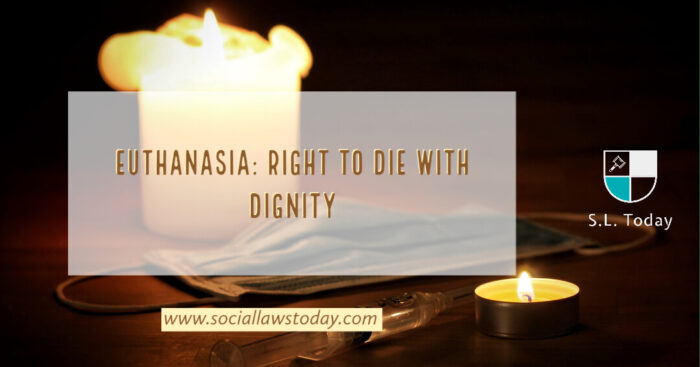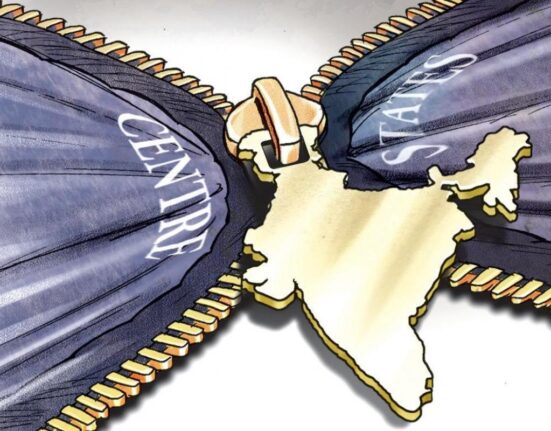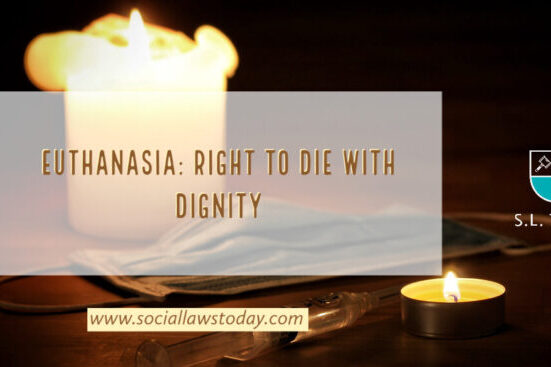PASSIVE EUTHANASIA Dhana Eshwar, 11:30 PM IST
INTRODUCTION
In India Euthanasia is least discussed topic in general public even in law Society. After the landmark case of Aruna Shanbaug, this topic emerged as a most discussed topic in Indian Judiciary. Firstly, let us discuss the emergence of euthanasia the word “Euthanasia” derived from Greek which resembles “Eu” as “good” and “Thanatos” as “death” means good death. It is also known as Mercy Killing. In the 17th Century, Francis Bacon used this in the medical context to refer to an easy, painless and happy death.
“According to the World Medical Association Euthanasia means: “Deliberate and intentional action with a clear intention to end another person’s life under the following conditions: The subject is a competent informed person with incurable illness. Who voluntarily asked for ending his life. The person who is acting knows about the state of this person and about his wish to die and is doing this action with an intention to end life of this person. The action is done with compassion and without any personal profit.”[1]
After the Judgement on Landmark case Aruna Shanbaug, the Indian Government introduced legislation named “The Euthanasia (Regulation) Bill,2019 in Lok Sabha. It still needs to be passed by both Houses of the Parliament and to receive the President assent to become Act. In India Active Euthanasia is still illegal above-mentioned Legislation is based on Passive Euthanasia. So, readers let’s dive into this core of the topic.
Types of Euthanasia
- Active Euthanasia: In this type, a person will be given medication or treatment which results in death. In this, some injections or tablets are given to the severely ill patient to give him death which is not voluntary.
- Passive Euthanasia: Passive Euthanasia means the abolition of necessary medical treatment of a person who is a vegetative state with an intention to give him death which releases him from severe pain. In this medication will be stopped which results in his death voluntarily.
- Voluntary Euthanasia: It is also known as Assisted Suicide. In this type, the person gives his/her consent to give them death. Euthanasia which practised with the consent of the person concerned.
- Involuntary Euthanasia: In this type person who is suffering is not in a position to give consent i.e. prolonged comma, then other Individual related to him gives the consent to give death to the sufferer.
- Non-Voluntary Euthanasia: In this type, the sufferer is not in a position to give consent such sufferers who are in comma, infants, severely brain-damaged etc.
Euthanasia in other Countries:
Switzerland:
In Switzerland, Voluntary or Assisted suicide has been decriminalized from the Swiss Federal Criminal code it was finalized in 1973 and came into force in January 1942. But assisted suicide should not be done with selfish or immoral intentions. It is defined in Article 115 of the Swiss Federal Criminal Code.
Netherlands:
Since 1981 Netherland recognizes both Voluntary Euthanasia and Doctor-Assisted Suicide but it was legally acknowledged in the year 2002 and patient need not be terminally-ill. It is initially allowed by the guidelines prepared by main legal and medical organizations. In this country, about 3% of deaths occurred due to voluntary euthanasia and these are reported.
Canada:
In 2014 the province of Quebec adopted legislation regarding doctor-assisted suicide and the federal government took similar steps in 2016. The sufferer should be competent to give consent and should be adult. Sufferer suffering from a grievous or irremediable condition and whose death is reasonably foreseeable receives medical assistance to die. They use the term terminally ill means expected to die within the period of six months but Canada is in the process to review their law and extend to cover patients who are incurably ill but not terminally ill.
USA:
“In 1997 Oregon became the first state to legalize doctor-assisted suicide for terminally ill adults (those with a prognosis for survival of six months or less). Later, in 2008, Washington State adopted essentially the same law followed by Vermont (2013); California (2016); Colorado (2016); Washington DC (2017); Hawaii (2018); New Jersey (2019); and Maine (2019). In Montana, its Supreme Court, in 2009, agreed that doctor-assisted suicide could be allowed. In these States, while a doctor has to write a prescription for the necessary medication, a healthcare professional need not be present when the terminally-ill patient decides to die. All these States require a fifteen-day period between two oral requests and a two-day waiting period between a final written request and the dispensing of the prescription.”[2]
Legal Provisions Regarding Passive Euthanasia:
- Under Section 3 of this bill, it states that the Central Government constitutes a board to be known as Evaluation and review board by way of notification in the official gazette. The constituted board consists of members namely Director General of health services in the Union Ministry of Health and Family Welfare, who shall be the ex-officio chairperson of this board. Central Government appoints two physicians, one jurist and one person having knowledge and experience in ethics and social welfare as members of the board.
- Under Section 5 of this bill, it states that board shall examine the applications of active and passive euthanasia and give their opinion. If in this Section application for euthanasia made for the child below 18 years of age then pediatrician to be appointed if existed board members do not contain pediatrician. In the application of active euthanasia, board members should give their opinion within three weeks of the receipt of that application.
- Under Section 7 of this bill, it states that an application for termination of life through active euthanasia shall be made to the Board by that person himself or where that person, by reason of his illness, lack of mental faculties or age or such other reasons, as may be prescribed, is unable to express his consent, by his parents or spouse or children or siblings or legal guardian.
- “Under Section 8 of this bill, it states that:
- An application for termination of life through passive euthanasia shall be made to the Chief Medical Officer of a Government hospital by the parents or spouse or children or siblings or legal guardian of that person. Constitution of Evaluation and Review Board. Officers and employees of the Board. Examination of application of active and passive euthanasia. Euthanasia not to be an offence. Application of active euthanasia. Application of passive euthanasia.
- On receipt of an application under sub-section (1), the Chief Medical Officer shall constitute a Committee consisting of three physicians for examining the person in respect of whom an application has been made and giving its opinion thereon.
- Notwithstanding anything in sub-section (2), where the application made under sub-section (1) is in respect of a person, whose any organ is to be transplanted to another person, or a girl child, the Chief Medical Officer shall forward that application to the Board.”[3]
- Under Section 9 of this bill, it states that board after examining the application of active or passive euthanasia is of the opinion that such person life to be terminated, it shall give a certificate stating it’s an opinion on the taken decision.
- Under Section 10 of this bill, it states that the application of active or passive euthanasia to be made to the Court of Session after court permits that application following action will be administered.
- “Under Section 11 of this bill, it states that on receipt of an application of euthanasia under section 10, the Court shall appoint a team of lawyers to investigate and enquire as to whether the patient, actually and without any extraneous influence of any kind, desires to terminate his life through euthanasia and make a report thereon. If the Court is satisfied with the report, it shall grant permission for euthanasia in the prescribed form under its seal and signature.”[4]
- “Under Section 12 of this bill, it states that on the production of permission from the Court of Session, the Civil Surgeon or Chief Medical Officer of a Government hospital shall fix a date for euthanasia. On the date so fixed, steps shall be taken to put the life of the patient to a gentle and painless end in the presence of the members of the family of the patient and a representative of the Court of Session.”[5]
Conclusion:
By concluding all the above matter, I just want to state that this legislation will free people from suffering and gives the right to die with dignity. In this people will not be kept alive forcefully they will be given painless death. It is good to die without any pain rather than living forcefully with pain. Legislation on this topic may be amended to remove any loopholes if exists. It is just my views.
[1] Prashant Thandalam Vasudevan, Euthanasia Law in India, Edu Index News(30 July 2020), https:// eduindexnews.com/2020/07/30/euthanasia-law-in-india/#:~:text=In.
[2] Assisted Dying in other Countries, My Death My Decision, https://www.mydeath-mydecision.org.uk/ info/assisted-dying-in-other-countries.
[3] “Gazette of India – Extraordinary, 2019-07-26, Part II-Section 2“, Internet Archive, https://archive.org/stream/in. gazette.central.e.2019-07-26.210642/210642_djvu.txt.
[4] Euthanasia Regulation Bill, 2019, Bill texts, http://164.100.47.4/billstexts/lsbilltexts/asintroduced/916LS%20As %20Int..%20Euthanasia%20as%20introduced..pdf.
[5] Euthanasia Regulation Bill, 2019, Bill texts, http://164.100.47.4/billstexts/lsbilltexts/asintroduced/916LS%20As %20Int..%20Euthanasia%20as%20introduced..pdf.





Leave feedback about this